See below for interesting graphics of Virginia early/absentee voting breakdowns from TargetSmart. According to TargetSmart CEO Tom Bonier, the analysis includes ” all votes cast before Election Day, as reported by the states…mail, early in person, and any other method of voting early.” Bonier adds that “You can look at the data nationally, or select a state, or look at battleground states collectively,” and that “Within states you can select by county, various districts, or media markets.” Also, keep in mind this important caveat: “The early vote is going to give us a decent indication of Dem enthusiasm (though not entirely, more on that soon) but not so much on GOP enthusiasm, since they are much more likely to vote on Eday.” Also, this very important caveat, particularly here in Virginia, where early voting laws changed drastically in 2020:
“The comparison to previous cycles is important and very imperfect. Almost every state has significantly expanded early voting access since ’18 and many have since limited access somewhat since ’20. So neither is a perfect point of reference.”
And finally from Bonier: “Perhaps my most important note – these are not projections of outcomes or candidate vote totals. This is turnout data in the context of prior elections. We hope this will enhance your understanding of the electorate, but please take it in context.”
So, with all those caveats, as well as an additional caveat that I don’t know exactly how TargetSmart gets its numbers or how its model works. Still, it’s interesting IMHO to look at what they’re saying. With that, see below for graphics on Virginia’s statewide 2022 early/absentee voting, as well as for VA02, VA07 and VA10. Here are a few takeaways:
- With 20 days to go until the election, the “modeled party” breakdown Virginia-wide is 56.7% Democratic–28.7% Republican–14.6% Unaffiliated. This compares to 54.3% D–31.7% R–14.0% U. So…a bit better for Dems compared to 2020 in terms of percentages, but absolute numbers are down from 2020 (which is not surprising, given that in 2020, there was a presidential election, US Senate election, plus a raging COVID pandemic which made people want to vote early, plus problems with the US Postal Service that made people want to get their ballots in as early as possible, etc, etc.).
- For VA02 specifically, the “modeled party” breakdown currently is 44.6% D–31.8% R–23.6% U. This compares to 49.3% D–39.3% R–11.5% U in 2020. So it looks like a big increase in the unaffiliated percentage, along with decreases in the Dem percentage (from 49.3% to 44.6%) and the Republican percentage (from 39.3% to 31.8%). But again, the absolute numbers are a lot smaller than in 2020 (for the reasons stated above). So all in all, it’s hard to tell whether this is good or bad news (or neutral) for Rep. Elaine Luria (D-VA02).
- For VA07 specifically, the “modeled party” breakdown currently is 56.8% D–28.8% R–14.4% U. This compares to 47.7% D–31.3% R–21.1% U in 2020. So it looks like a decrease in the unaffiliated percentage, along with an increases in the Dem percentage (from 47.7% to 56.8%) and a decrease in the Republican percentage (from 31.3% to 28.8%). But again, the absolute numbers are a lot smaller than in 2020 (for the reasons stated above). So all in all, maybe good news for Rep. Abigail Spanberger (D-VA07)?
- For VA10 specifically, the “modeled party” breakdown currently is 55.3% D–28.7% R–16.0% U. This compares to 45.5% D–35.1% R–19.4% U in 2020. So it looks like a big increase in the unaffiliated percentage, along with an increase in the Dem percentage (from 45.5% to 55.3%) and a decrease in the Republican percentage (from 35.1% to 28.7%). And again, the absolute numbers are a lot smaller than in 2020 (for the reasons stated above). So all in all, maybe good news for Rep. Jennifer Wexton (D-VA10)?
P.S. Also according to Bonier, “Younger voters generally tended not to vote early, before ’20. In ’20 they voted early in big numbers. Polling suggests they will be going back to Eday voting this year.”
P.P.S. The national early voting numbers are up sharply from 2018 (from 2.76 million to 4.05 million), with Dems up from 43.9% in 2018 to 55.7% this election, and with Rs down from 46.0% in 2018 to 33.5% this election.



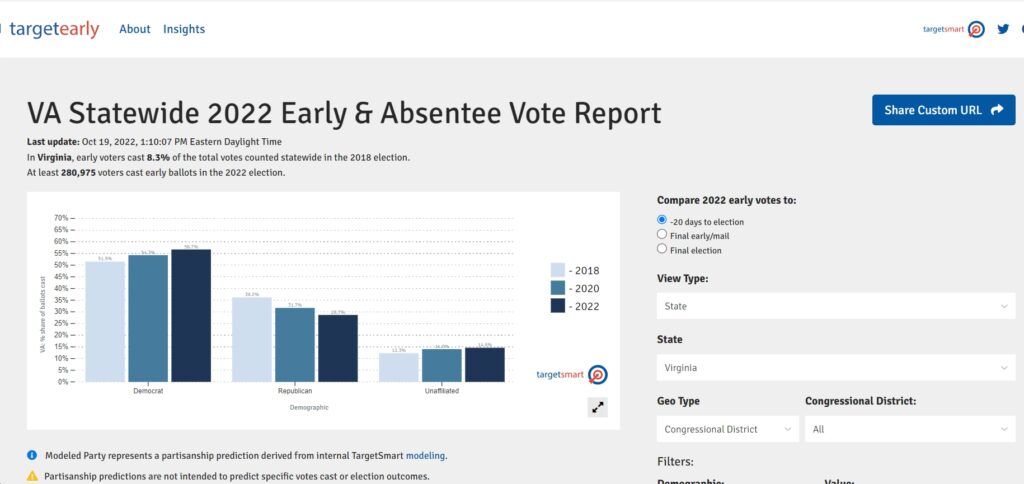
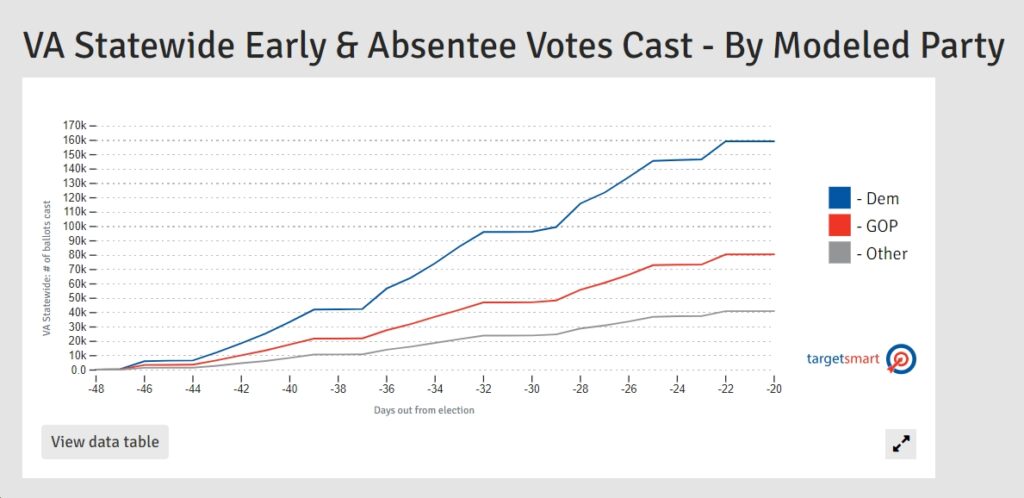
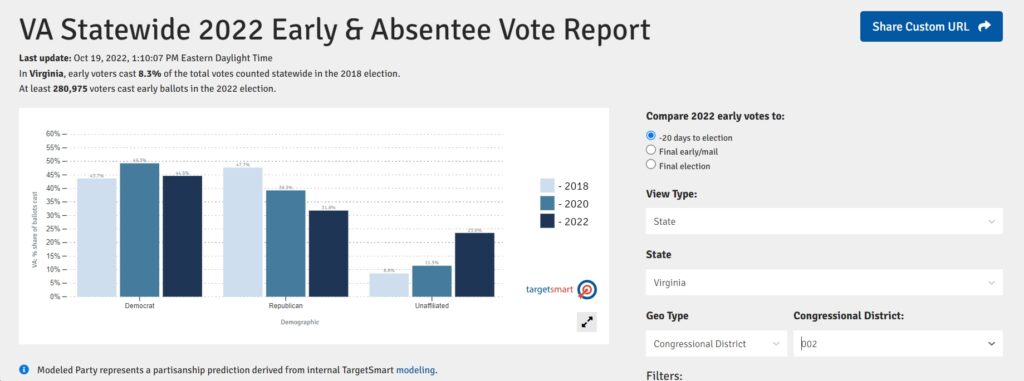

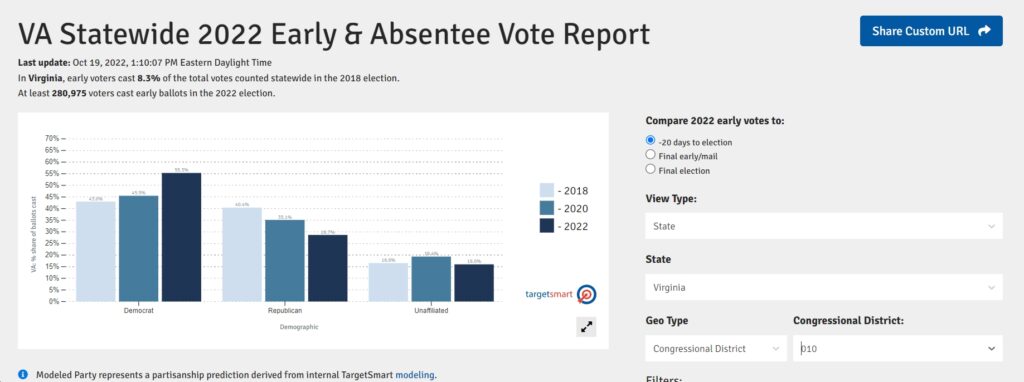

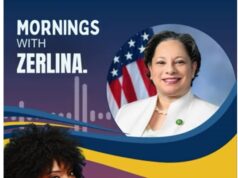
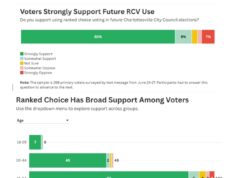








![Monday News: Trump’s Lunacy Pushes China, Russia, India, etc. Together; “Happy Labor Day. Donald Trump and Elon Musk Are Screwing Workers.”; “Where is the [media’s] intense focus on Trump’s failing health?”; ““Trump says he is not a dictator. Isn’t he?”](https://bluevirginia.us/wp-content/uploads/2025/09/montage0901-100x75.jpg)